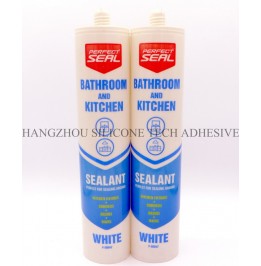Proper ventilation after applying bathroom sealants is critical to ensure safety, prevent health risks, and achieve optimal curing results. Inadequate airflow can lead to prolonged exposure to volatile organic compounds (VOCs) and hinder the sealant’s performance. Understanding the factors influencing ventilation needs and adhering to best practices is essential for both homeowners and professionals.

The duration of ventilation depends on several variables, including the type of sealant used, environmental conditions, and the size of the bathroom. Solvent-based sealants typically emit higher levels of VOCs compared to water-based or silicone-based alternatives, necessitating longer airflow periods. For instance, a solvent-based acrylic sealant may require double the ventilation time of a low-VOC silicone variant.
Ambient temperature and humidity also play a role. High humidity can slow down the curing process, trapping VOCs in the air for extended periods. Conversely, dry and warm conditions may accelerate curing but could still require sufficient ventilation to disperse residual fumes. In small bathrooms with limited natural airflow, such as those without windows or exhaust fans, ventilation times may need to be extended to compensate for poor circulation.
Additionally, the thickness of the sealant layer affects drying and off-gassing. Thicker applications take longer to cure, releasing VOCs over a more extended period. Workers should consider these factors when estimating ventilation needs, adjusting timelines based on real-time observations of air quality and sealant hardness.
While specific durations vary, a common rule of thumb is to maintain continuous ventilation for at least 24 to 48 hours after sealant application. This period allows most sealants to reach a safe curing stage, reducing VOC concentrations to acceptable levels. For solvent-based products, extending ventilation to 72 hours may be advisable, especially in poorly ventilated spaces.
Using mechanical ventilation, such as exhaust fans rated for bathroom use, can significantly enhance airflow. These fans should operate at full capacity during and after application, with some experts recommending leaving them on overnight. Natural ventilation, through open windows or doors, complements mechanical systems but may be less effective in humid or cold climates.
During ventilation, occupants should avoid entering the bathroom unless necessary. If access is required, wear a respirator with organic vapor filters and limit exposure time. Keep pets and children away from the area to prevent accidental contact with wet sealant or inhalation of fumes.
Recognizing inadequate ventilation early prevents health issues and curing problems. Persistent strong odors, even after 24 hours, indicate that VOCs have not fully dispersed. Eye irritation, headaches, or dizziness among occupants are red flags, signaling high concentrations of harmful chemicals.
Visual cues also matter. If the sealant remains tacky or soft beyond the expected curing time, poor ventilation may be trapping moisture and slowing the process. In extreme cases, condensation on surfaces or mold growth near the sealant line suggests excessive humidity and insufficient air exchange.
To address these issues, increase ventilation duration and intensity. Add portable air purifiers with activated carbon filters to capture residual VOCs. If problems persist, consult a professional to reassess the sealant type or application method, as some products may not be suitable for high-humidity environments like bathrooms.
Even after initial curing, maintaining good airflow in bathrooms is beneficial. Regular use of exhaust fans during showers and baths prevents moisture buildup, reducing the risk of mold and mildew that can compromise sealant integrity. Periodic checks for cracks or gaps in the sealant line ensure long-term effectiveness, as damaged areas may release additional fumes during repairs.
For renovations or repeated sealant applications, follow the same ventilation protocols as initial installations. Overlapping layers of sealant can extend off-gassing periods, requiring careful monitoring of air quality. Homeowners should also consider upgrading ventilation systems if recurring issues arise, such as installing larger exhaust fans or adding vents to improve circulation.
Ultimately, prioritizing ventilation protects both occupant health and the durability of the sealant. By combining immediate post-application airflow with ongoing moisture management, bathrooms remain safe, functional, and free from harmful chemical exposure.
Copyright 2019 by Hangzhou Silicone Tech Adhesive Co., Ltd. All rights reserved.
Bathroom Sealant | Acrylic Sealant | Dow Corning 795 | Aquarium Sealant | Dow Corning 732 | Clear Silicone Sealant | Polysulfide Sealant | Glazing Sealant | Mirror Sealant | IG Sealant
Powered by Onepound